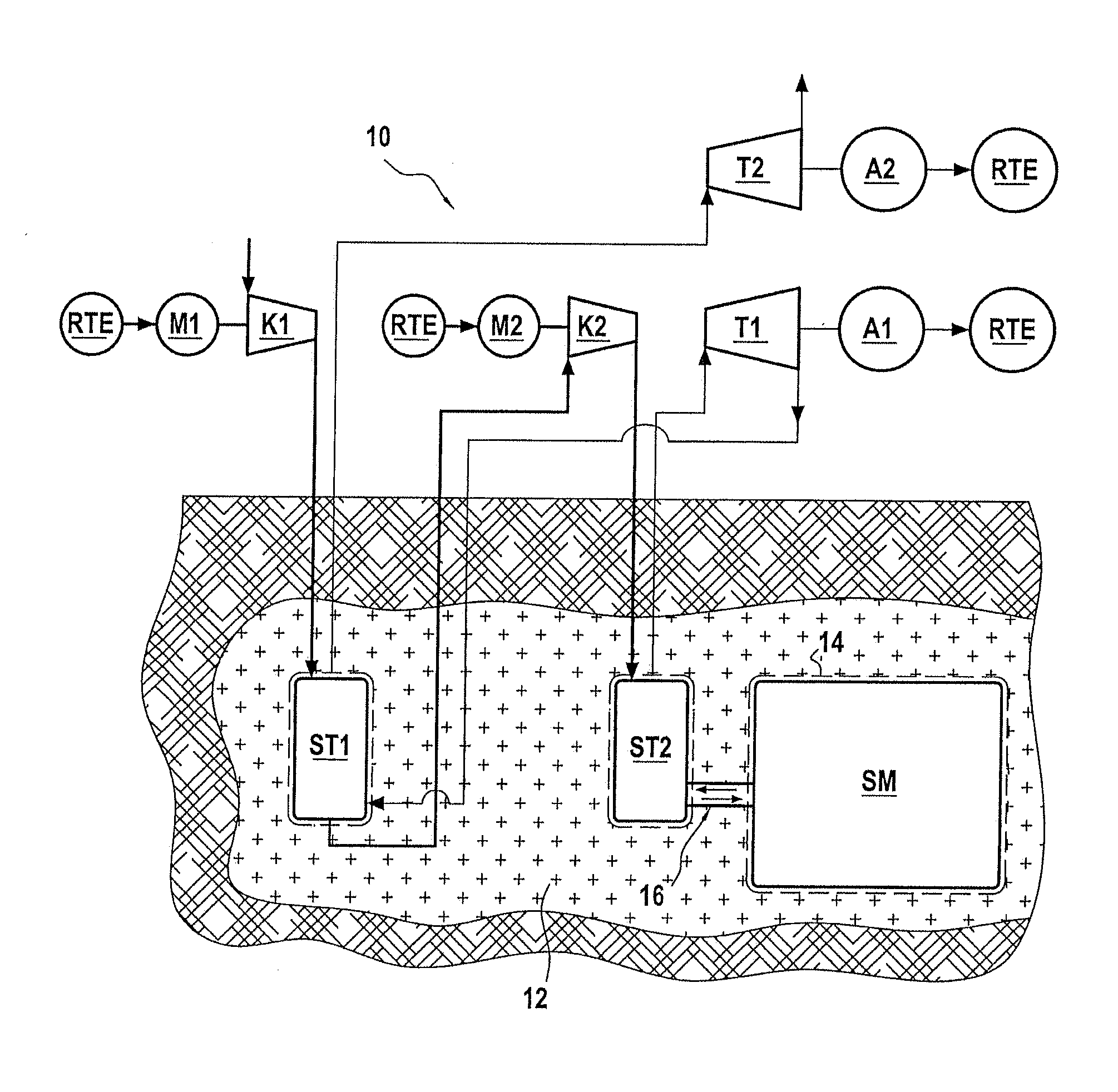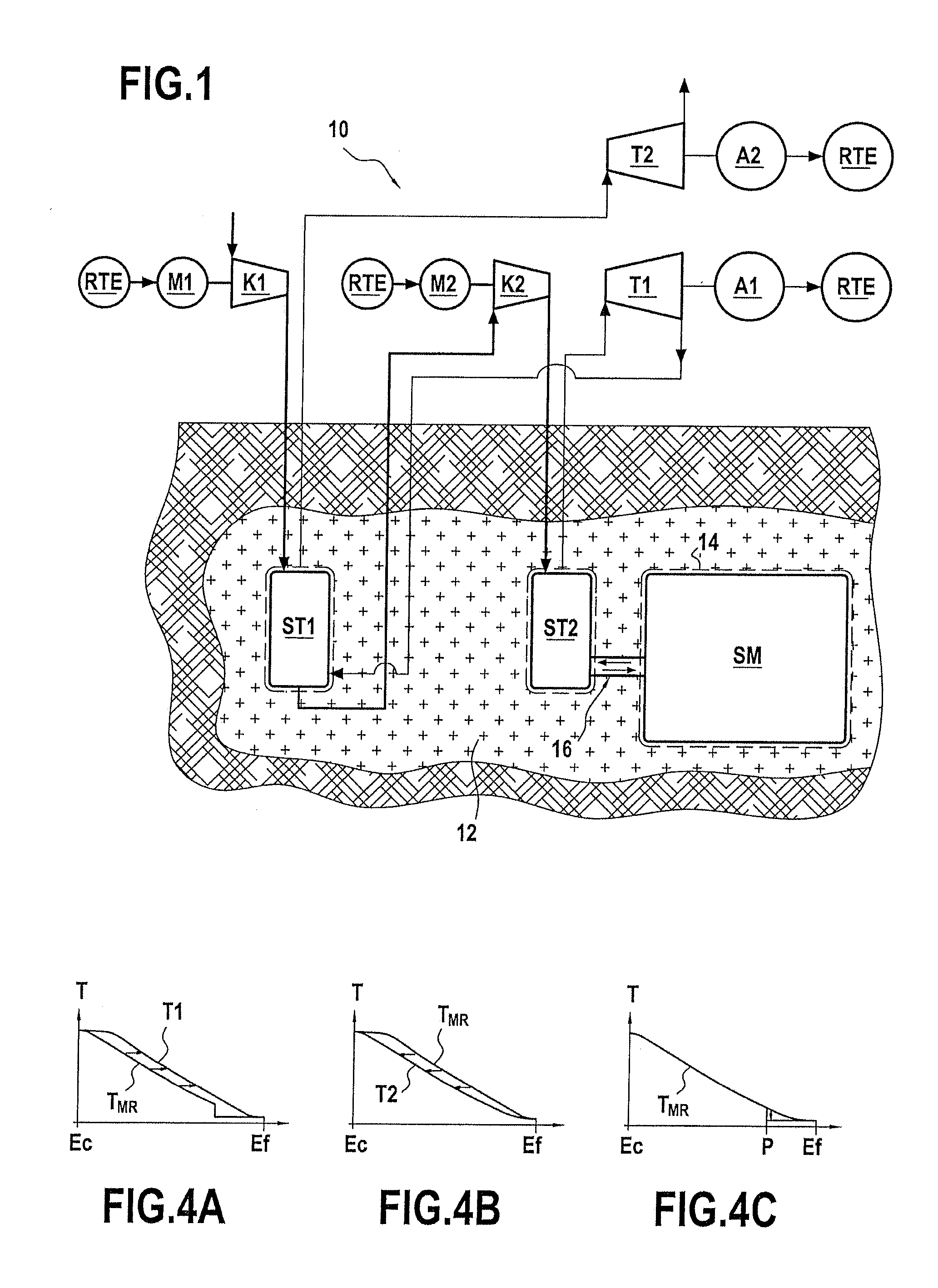Regulating the Temperature of a Heat Regenerator Used in an Installation for Storing Energy by Adiabatic Compression of Air
a technology of adiabatic compression and heat regeneration, which is applied in the direction of regenerative heat exchangers, engine fuctions, lighting and heating apparatus, etc., can solve the problems of low electrical efficiency (less than 50%), poor satisfaction of diabatic installations, and low electrical efficiency
- Summary
- Abstract
- Description
- Claims
- Application Information
AI Technical Summary
Benefits of technology
Problems solved by technology
Method used
Image
Examples
Embodiment Construction
[0024]FIG. 1 is a highly diagrammatic view of an installation 10 for mass storage of energy (i.e. several gigawatts (GW) thermal) by adiabatic compression of air in accordance with the invention.
[0025]The invention 10 comprises one or more compression stages (there being two in FIG. 1, corresponding to a medium compression stage and a high compression stage) together with one or more expansion stages (there likewise being two in FIG. 1).
[0026]Each compression stage comprises an axial or a radial type compressor (i.e. a medium-pressure compressor K1 and a high-pressure compressor K2) driven by a respective electric motor M1 or M2, the motor being electrically powered from the electricity transmission network RTE. Similarly, each expansion stage comprises an air turbine T1, T2 connected to an alternator A1, A2 in order to deliver electricity to the electricity transport network RTE.
[0027]The installation 10 also has a lined excavated cavity SM in which the air compressed by the compre...
PUM
 Login to View More
Login to View More Abstract
Description
Claims
Application Information
 Login to View More
Login to View More - R&D
- Intellectual Property
- Life Sciences
- Materials
- Tech Scout
- Unparalleled Data Quality
- Higher Quality Content
- 60% Fewer Hallucinations
Browse by: Latest US Patents, China's latest patents, Technical Efficacy Thesaurus, Application Domain, Technology Topic, Popular Technical Reports.
© 2025 PatSnap. All rights reserved.Legal|Privacy policy|Modern Slavery Act Transparency Statement|Sitemap|About US| Contact US: help@patsnap.com



